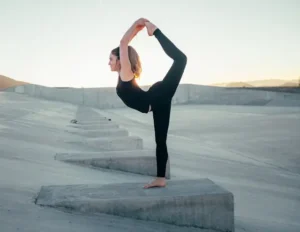Introduction
Mental health is an essential part of our overall well-being, yet it’s often overlooked in our daily lives. We prioritize work, family, and responsibilities, often leaving little time for our mental and emotional needs. This is where creating a “Mental Health Spot” can play a crucial role. A mental health spot is a dedicated space designed solely for self-care, relaxation, and mental well-being. In this article, we’ll walk you through the steps to create your own mental health spot, discuss its importance, and share tips for making it a comfortable, calming space.
Understanding the Need for a Safe Space
Having a designated area for mental health can offer a sense of relief and refuge from life’s stressors. This safe space serves as a place where you can disconnect from daily pressures, allowing you to focus on yourself. It’s a space for reflection, where you can process emotions and clear your mind, ultimately contributing to better emotional health.
Benefits of Creating a Personal Mental Health Spot
Improved Self-Awareness
When you have a mental health spot, you give yourself the opportunity to be introspective. Spending time in this dedicated space can help you understand your feelings, identify stressors, and learn more about what you need for emotional balance.
Reduced Stress and Anxiety
Your mental health spot can be a sanctuary for stress relief. The tranquility of this personal area can help lower cortisol levels and provide you with a peaceful environment to unwind and recharge.
Space for Emotional Release
Whether through journaling, meditation, or simply sitting in silence, your mental health spot provides a private setting for emotional expression. Sometimes, just having a safe place to cry, breathe, or reflect can be incredibly healing.
Key Elements of a Mental Health Spot
Privacy and Comfort
Privacy is essential when creating a mental health spot. Find an area where you can have some alone time without interruptions, whether it’s a room, a corner, or a small outdoor area.
Calming Colors and Decor
Choosing soothing colors like soft blues, greens, and neutrals can help you relax. Decorate with items that feel calming to you, like plants, gentle lighting, and soft textures.
Personal Touches and Meaningful Objects
Include objects that bring comfort or inspiration, like photos, meaningful quotes, or sentimental items. These personal touches make the space feel uniquely yours and deepen the sense of calm and safety.
Choosing the Right Location for Your Mental Health Spot
Indoors vs. Outdoors
If you have an outdoor area that feels safe and private, it can be an ideal mental health spot. Otherwise, an indoor area works perfectly, as long as it’s a place where you feel comfortable and can escape distractions.
Selecting a Room or Corner
You don’t need a big space for your mental health spot; even a small corner can be transformed. Look for areas with natural light and quiet, or places you can easily adapt to feel cozy.
Making Use of Small Spaces
Small spaces can be ideal for a mental health spot. Consider using a corner of your bedroom, a window seat, or even a closet you can clear out and decorate.
Decorating Tips for a Calming Environment
Minimalistic Decor
Less is more in a mental health spot. Keep your decor simple, with only a few items that bring peace and relaxation. Clutter can be distracting and may prevent you from truly unwinding.
Soft Lighting Choices
Lighting plays a big role in creating a calm atmosphere. Opt for soft, warm lights or candles instead of bright, harsh lighting. If possible, natural light can also be a great source of comfort.
Nature-Inspired Elements
Including plants or natural materials like wood, stones, or seashells can help ground your space and bring in a sense of nature’s calm.
Incorporating Relaxation Techniques
Breathing Exercises
Your mental health spot is an ideal place for breathing exercises. Practicing deep breathing can reduce stress and improve mindfulness, helping you reconnect with your body and mind.
Meditation and Mindfulness
Meditation is a powerful tool for mental health. Whether you’re new to meditation or experienced, use your space to meditate daily or whenever you need a mental reset.
Gentle Stretches and Yoga
Consider adding gentle stretches or yoga into your routine. These activities can ease physical tension and encourage mental relaxation, making them great additions to your self-care practices.
Adding Tools for Emotional and Mental Wellness
Journals and Notebooks
Keeping a journal in your mental health spot can be incredibly therapeutic. Writing down thoughts and emotions can provide clarity and release any mental clutter you may be holding onto.
Affirmation Cards or Inspirational Quotes
Surrounding yourself with positive affirmations or quotes can help you maintain a hopeful outlook. These simple messages can be incredibly uplifting during difficult times.
Apps and Gadgets for Relaxation
Consider using mental wellness apps or relaxation gadgets, such as guided meditation apps, white noise machines, or calming lights, to enhance the experience in your space.
Using Sensory Elements to Enhance Your Space
Aromatherapy and Essential Oils
Scents like lavender, chamomile, or eucalyptus can be calming. Use essential oils, candles, or incense to introduce gentle, soothing aromas to your space.
Sound Options: Music, Nature Sounds, White Noise
Playing calming sounds can deepen your relaxation. Choose music that soothes you, nature sounds, or even white noise to block out distractions.
Visual Relaxation Aids like Artwork
Hanging peaceful artwork or posters can contribute to a calming atmosphere. Choose visuals that make you feel happy and serene.
The Role of Technology in Your Mental Health Spot
Benefits of Mental Wellness Apps
Mental wellness apps offer guided meditation, journaling prompts, and other tools that can enhance your mental health practices. However, it’s crucial to set boundaries on tech use to avoid distraction.
Setting Boundaries with Technology
While apps can be beneficial, limit other tech distractions in your mental health spot. Avoid phone calls, social media, or other distractions that could interrupt your peace.
Creating a Routine for Self-Care in Your Spot
Establishing Regular Self-Care Practices
Consistency is key when it comes to mental health. Try to spend time in your mental health spot every day, even if it’s just for a few minutes.
Scheduling Dedicated Time
Put your mental health on your calendar. Having a dedicated block of time helps ensure you prioritize your well-being.
Keeping It Flexible
Self-care doesn’t have to be rigid. Allow flexibility in how and when you use your space, depending on your needs.
Involving Loved Ones (Optional)
Encouraging Family or Friends to Support Your Space
While your mental health spot is personal, loved ones can support your self-care routine by respecting your space or even creating their own.
Sharing Your Spot with Others
If you’re comfortable, invite family or friends to share your space for a collective healing experience.
Common Mistakes to Avoid in Your Mental Health Spot
Overloading with Objects
Too many items can clutter your space and take away from its calming effect. Keep it clean and purposeful.
Neglecting Regular Upkeep
Maintain your space by keeping it tidy and refreshing it as your needs change.
Forcing Routines That Don’t Feel Natural
Your mental health spot should feel easy and comforting. Don’t force yourself to stick to routines that don’t bring you peace.
Maintaining and Evolving Your Space Over Time
Adapting as Your Needs Change
Over time, your needs may shift. Regularly reassess your space and make adjustments to reflect your evolving emotional and mental health.
Refreshing Your Spot
Occasionally update the decor or add new elements to keep the space inviting and exciting.
Conclusion
Creating a mental health spot is an empowering way to nurture your emotional well-being. It’s a dedicated space for reflection, relaxation, and rejuvenation. By following these steps and maintaining consistency, you can transform your space into a haven for peace and healing.
FAQs
- How much space do I need for a mental health spot?
You don’t need a lot of space! A small corner or nook in your room can work perfectly. - What if I don’t have a lot of privacy at home?
Look for quieter, less-trafficked areas, like the back of your bedroom or even the bathroom. Use curtains or screens if necessary to create privacy. - Can I use my mental health spot for activities like work or studying?
It’s best to keep your mental health spot separate from work or study areas to maintain its calming purpose. - How often should I use my mental health spot?
It’s ideal to use it daily, even for just a few minutes. Consistency helps you build positive mental health habits. - Is it okay to change the setup of my space frequently?
Yes! Your needs may change, and so can your space. Refreshing it periodically keeps it aligned with your current state of mind.







Be First to Comment